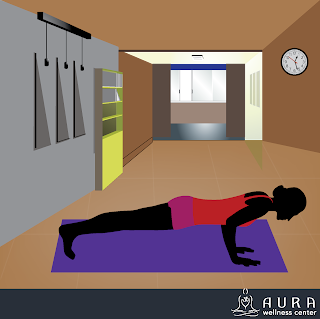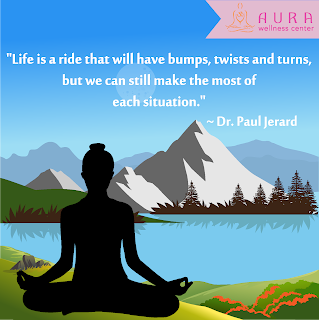Do you include mudras in your classes? Are you looking for more smooth ways to incorporate them into your sequences? Why do so? Mudras are ancient hand and arm positions that can focus both mental and physical energy - and much, much more.
Western culture students will appreciate them more if they compliment the current pose, are not the sole focus, and aren’t overly esoteric. Let’s look at four places where we can incorporate mudras into a typical Vinyasa flow.
1. Seated Opening Poses
1) Guide students to take a seat, in Hero’s Pose (Virasana) or Easy Pose (Sukhasana). Have them reach arms up into an Upward Reach (Urdhva Hastasana).
2) Mudras that work well here include fingers interlaced and palms facing up to the sky (stretches the hands and wrists), Steeple Mudra (focuses energy upwards), and thumbs hooking but trying to pull apart (opens the collarbones and shoulders).
3) Cue your students to feel a rooting down through your seat, and a rising up through the top of your head. Ask them to try softening through the face, teeth, and jaw.
4) Cue them to take any other variations that feel right here - a gentle backbend, a sidebend each way, or a twist each way (going right first, per the design of the digestive system). Take the other side of twists or sidebends. Release the mudra and take a few breaths in your seat, noticing the effects of taking it.
2. Mudras with Lunge Variations
1. Cue a lunge pose, taking the left foot back. Students can keep the back knee lifted (grounding through the ball of the back foot) or drop the back knee down (pressing through the top of the foot to allow the shin to take pressure off the knee). 2. Guide students in setting a stable base here, feeling the outer thighs spiral outwards while the inner thighs hug in towards each other. Reach the arms out and up to set up the upper body in the pose. 3. Hug the arms slightly inwards towards the ears. Find a lengthening upwards on breaths in, and a softening on the breaths out. Cue any of the mudras you explored with seated poses - and any additional sidebends, backbends, or twists (taking the right first and then the left with twists, and making sure to sidebend to both sides).
4. Guide students through all of that on the other side - moving through a Vinyasa or integrated into a longer sequence. Remind students to try to find ease while enjoying the focused strength that these mudras help bring.
3. Wide-legged Forward Fold
1. Guide students to set their feet three to four feet apart (depending upon height/leg length). Ground down through the outer edges of the feet and the big toes, but lift through the insteps. From these actions feel the tailbone become heavy, the outer thighs spiral outwards, and the inner thighs hug in towards each other.
2. Cue them to find a mudra with the hands - “Steeple” mudra and simply interlaced fingers work well here. These help open up the chest, fronts of shoulders, and collarbone area in the pose.
3. Then instruct them to fold forward from the hips, leading with the crown of the head and keeping a long, flat spine. Once students are folded to the extent possible, they should try to fix the gaze upwards and backwards (in relation to the direction the toes are facing).
4. Ask them to try releasing any tension in the face, teeth, and jaw - redirecting that energy to where it's more useful, in the legs and core (which are working to keep to them stable in the pose). When ready, they can slowly and gently rise the torso - either fully or half-way up, depending upon where you intend to lead students next.
4. In Gate Pose (Parighasana)
1. Cue students, from kneeling, to take the right foot out and find a “Mountain Pose” foot there (grounding down through the outer edge of foot and big toe while lifting up through the instep, as described). Feel the tailbone drop.
2. Instruct them to rise the arms out of the shoulders, lifting with the biceps rather than the shoulders (which should be as released as possible). Ask them to lift the chin just slightly and set the gaze. Have them reach the arms up in an Urdhva Hastasana shape, and then find a mudra from there (among those mentioned in seated poses, or others that may intuitively work here).
3. Guide students to lift through the spine (from the pelvis to the top of the head) on a breath in. Have them sidebend to the right on a breath out, and hold for five to ten breaths. On a breath in, have them rise the torso back to vertical.
4. Cue them to release the mudra, to then take the hands back down to the ground. Have them take the right foot back in to re-ground through the right knee, so that they are again kneeling. Lead students through the same process on the next side.
© Copyright – Aura Wellness Center – Publications Division
Please feel free to share our posts with your friends, colleagues, and favorite social media networks.














